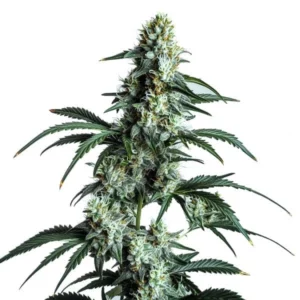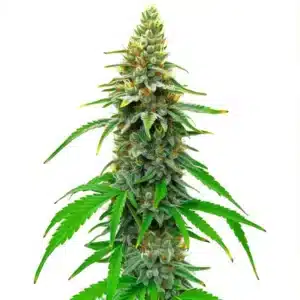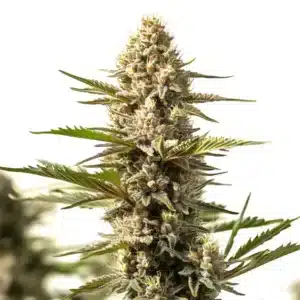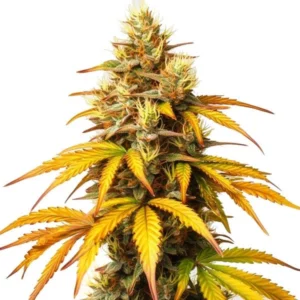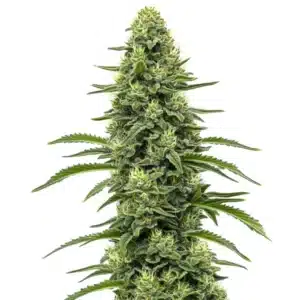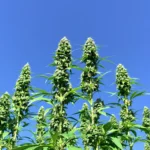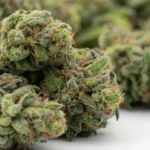
How Humidity Affects Cannabis Transpiration
How humidity affects cannabis transpiration is a key factor in plant health. Humidity plays a critical role in how cannabis plants manage water. When the air is too dry, plants may lose moisture too quickly. On the other hand, if the air is too humid, it can slow down the transpiration process. This delicate balance directly impacts the growth, nutrient uptake, and overall health of your plants.
Transpiration is the process where cannabis plants release water vapor through tiny openings called stomata. The surrounding humidity levels influence how easily this vapor escapes. When you manage humidity well, you help your cannabis plants thrive by maintaining optimal transpiration rates.
Recommended Strains
Purple Haze
|
|
THC | 14% - 18% (Medium) |
|
|
Type | Feminized |
|
|
Yield | Low |
|
|
Phenotype | 40% Indica / 60% Sativa |
Sour Diesel
|
|
THC | 22% - 25% (Medium) |
|
|
Type | Feminized |
|
|
Yield | High |
|
|
Phenotype | 30% Indica / 70% Sativa |
Let’s dive into the nuances of how humidity affects cannabis transpiration and explore some practical examples to help you optimize your growing environment.
Impact of Humidity on Cannabis Plant Transpiration
The impact of humidity on cannabis plant transpiration is significant. When humidity levels are high, the air holds more moisture, reducing the plant’s ability to release water vapor. This can lead to a slower transpiration rate, affecting how nutrients move within the plant.
Conversely, low humidity levels can cause cannabis plants to transpire too quickly. This rapid water loss can stress the plant, making it more susceptible to diseases and nutrient deficiencies. Managing humidity is key to maintaining healthy transpiration and ensuring your plants grow strong and robust.
Knowing the impact of humidity on cannabis plant transpiration is essential for growers looking to maximize their yield. The balance between water retention and loss directly affects the plant’s ability to absorb nutrients efficiently. By maintaining the right humidity levels, growers can prevent common issues such as wilting or nutrient lockout, which are detrimental to plant health and productivity.
Besides to affecting water and nutrient uptake, humidity levels also play a role in the overall energy efficiency of the plant. When transpiration is optimal, plants use energy more effectively, leading to better growth rates and higher quality outputs. This knowing underscores the importance of controlling environmental conditions to support sustainable and bountiful cannabis cultivation.
Promos & Deals
Role of Relative Humidity in Cannabis Water Loss
Relative humidity (RH) refers to the percentage of moisture in the air compared to what it can hold at that temperature. The role of relative humidity in cannabis water loss is crucial. When RH is balanced, cannabis plants can maintain healthy water levels, supporting optimal growth and nutrient uptake.
For example, during the vegetative stage, maintaining a relative humidity of around 60% can promote vigorous growth. As plants transition to the flowering stage, reducing RH to about 40-50% helps prevent mold and mildew, while still allowing for adequate transpiration.
The function of relative humidity in cannabis water loss becomes increasingly important as plants progress through different growth stages. Each phase requires specific humidity adjustments to ensure that water loss is minimized while allowing for necessary transpiration to occur. By tailoring the environment to meet these needs, growers can safeguard against potential water stress that might impede plant development.
Moreover, the role of relative humidity in cannabis water loss extends to influencing the overall plant environment. High RH levels can create conditions conducive to pathogens, while low RH can lead to dehydration. Therefore, achieving a balanced RH is not only about maintaining water levels but also about creating a protective barrier against environmental threats.
Cannabis Transpiration Rates and Humidity Levels
Transpiration rates in cannabis are directly linked to humidity levels. In a well-controlled environment, you can adjust humidity to influence how much and how fast water is released from the plants. This is a critical aspect of environmental control for both novice and experienced growers.
For example, a strain like Purple Haze from Blimburn Seeds thrives in environments where humidity is carefully managed. By adjusting humidity levels, you can optimize the plant’s transpiration rates to match its growth phase, ensuring healthy development and potent yields.
Knowing cannabis transpiration rates and humidity levels allows growers to fine-tune their cultivation practices. By monitoring these factors, growers can create a symbiotic relationship between the plant and its environment, ensuring that transpiration rates are neither too high nor too low. This balance is critical for maintaining the plant’s internal water economy, which is vital for nutrient transport and growth.
Besides, cannabis transpiration rates and humidity levels are crucial for optimizing photosynthesis. Adequate transpiration ensures that plants receive the necessary CO2 for energy production, thereby boosting growth and vigor. By leveraging technology such as hygrometers and automated climate control systems, growers can maintain stable humidity levels, ensuring consistent and robust plant health.
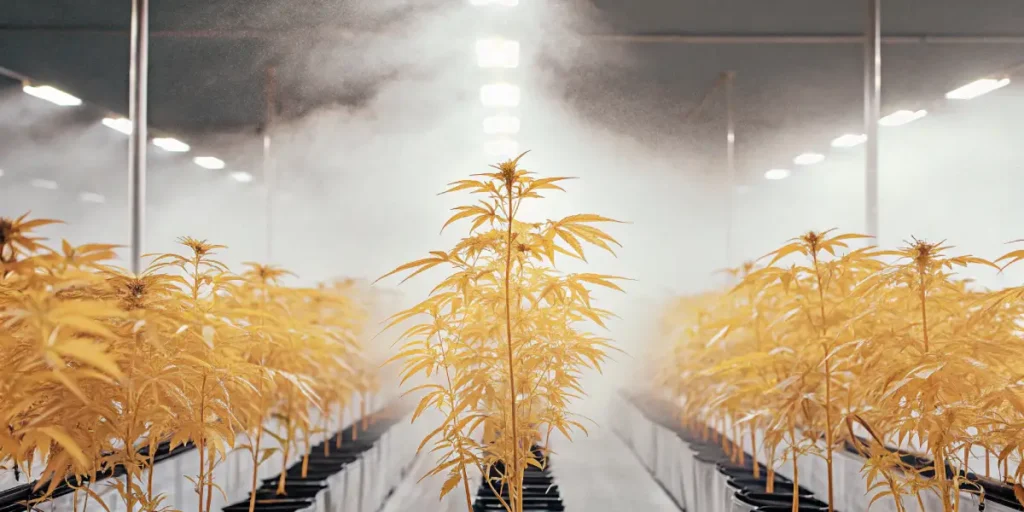
How Does Humidity Influence Cannabis Leaf Transpiration?
The influence of humidity on cannabis leaf transpiration is profound. When there’s a balance, leaves can efficiently regulate water loss, which is crucial for photosynthesis and nutrient uptake. However, fluctuations in humidity can disrupt this balance.
For instance, in low humidity conditions, cannabis leaves may curl to reduce surface area, limiting water loss but also restricting growth. A strain like Sour Diesel from Blimburn Seeds benefits from stable humidity levels, which support its vigorous growth patterns and high resin production.
Knowing how humidity influences cannabis leaf transpiration can empower growers to make informed decisions about their environmental controls. When humidity is optimized, leaf surfaces can function correctly, allowing for efficient gas exchange and transpiration rates. This balance is essential for maintaining the plant’s physiological processes that drive growth and yield.
Moreover, how humidity influences cannabis leaf transpiration can also affect the plant’s defense mechanisms. By ensuring that humidity levels are within the desired range, growers can enhance the plant’s resistance to stress and pathogens, leading to better overall health and productivity. This highlights the importance of regular monitoring and adjustments to environmental conditions to support optimal plant performance.
Effects of Humidity Fluctuations on Cannabis Transpiration
Humidity fluctuations can have adverse effects on cannabis transpiration. Sudden changes can stress plants, affecting their ability to transport water and nutrients effectively. This can lead to reduced yields and compromised plant health.
Strains like Blue Dream from Blimburn Seeds are particularly sensitive to these fluctuations. Consistent humidity levels help maintain steady transpiration, ensuring the plants receive the right amount of water and nutrients at all times.
The effects of humidity fluctuations on cannabis transpiration can manifest as physical symptoms such as wilting, leaf curling, or discoloration. These are signals that the plant is under stress and may not be transpiring effectively. By knowing these signs, growers can take corrective actions to restore balance and prevent long-term damage to the plant.
Additionally, the effects of humidity fluctuations on cannabis transpiration can extend to the plant’s metabolic processes. Inconsistent humidity can disrupt the plant’s ability to produce energy and synthesize essential compounds, impacting overall growth and cannabinoid production. By maintaining a stable environment, growers can ensure that their plants achieve their full potential in terms of both yield and quality.
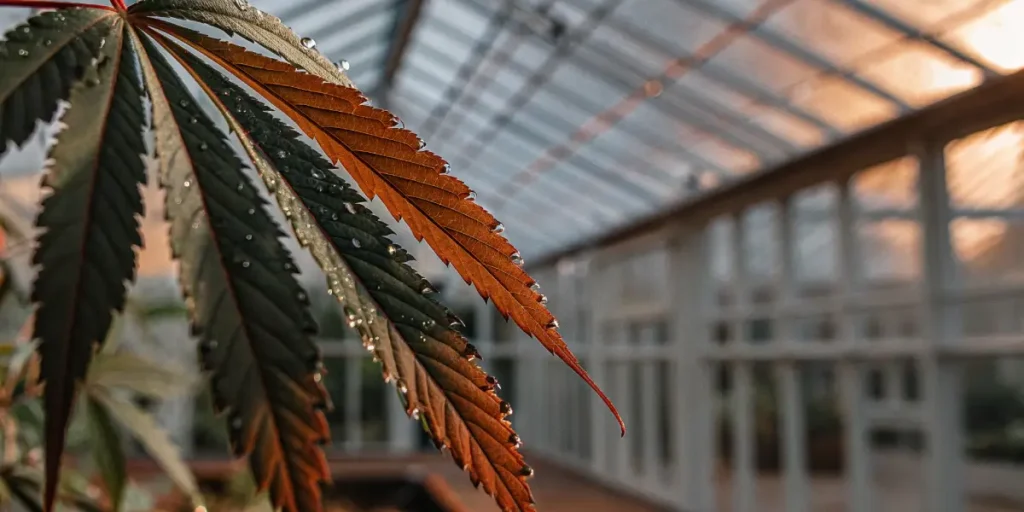
FAQs
What is the ideal humidity level for cannabis plants?
The ideal humidity level varies depending on the growth stage. During the vegetative stage, aim for 60-70% relative humidity. This promotes healthy leaf development and robust growth. As the plant enters the flowering stage, reduce humidity to 40-50% to prevent mold and mildew, while still supporting adequate transpiration.
Monitoring and adjusting your grow room’s humidity can greatly influence your cannabis plants’ health. Tools like hygrometers and humidifiers/dehumidifiers can help maintain these optimal conditions, ensuring your plants thrive through each growth phase.
Knowing the ideal humidity level for cannabis plants is crucial for achieving optimal growth. Different stages of plant development require specific humidity conditions to support various physiological processes. By tailoring humidity levels to match the plant’s needs, growers can enhance productivity and ensure high-quality yields.
Moreover, the ideal humidity level for cannabis plants can also affect the plant’s susceptibility to pests and diseases. Maintaining the correct humidity range can help prevent the spread of mold and mildew, which thrive in overly moist environments. By implementing proper humidity controls, growers can create a safer and more productive growing space.
How can I control humidity in an indoor cannabis grow?
Controlling humidity in an indoor grow setup involves using a combination of tools and techniques. Humidifiers and dehumidifiers are essential for adjusting moisture levels. Additionally, proper ventilation ensures air circulation, which helps stabilize humidity.
Regularly check your humidity levels with a hygrometer. Adjust your equipment settings based on the data you collect. For example, if you notice increased humidity during the flowering stage, a dehumidifier can quickly bring levels down to prevent potential issues.
Mastering how to control humidity in an indoor cannabis grow is vital for maintaining a healthy environment. By employing a combination of equipment and monitoring tools, growers can create a stable climate that supports the plant’s needs throughout its life cycle. This proactive approach to humidity management can lead to improved plant health and increased yields.
Besides to mechanical solutions, growers can also explore natural methods to control humidity in an indoor cannabis grow. This includes optimizing watering schedules, using absorbent materials, or adjusting plant density to influence moisture levels. By integrating these techniques, growers can fine-tune their environment for maximum efficiency and productivity.
Can high humidity cause problems for cannabis plants?
Yes, high humidity can create several problems for cannabis plants. It can lead to slow transpiration, resulting in nutrient uptake issues. Moreover, it creates an environment conducive to mold and mildew, which can devastate your crop.
Maintaining a balanced humidity level is crucial. Keep an eye on your grow room’s conditions, especially during the flowering stage. Using strains like Purple Haze, which are more resilient to humidity changes, can also mitigate some risks associated with high moisture levels.
High humidity can also impact the plant’s physiological balance by affecting how humidity affects cannabis transpiration. When moisture levels are too elevated, it can lead to an over-saturation of the plant’s cells, hindering proper water and nutrient transport. This can stunt growth and reduce the plant’s overall vitality, underscoring the need for vigilant humidity management.
Furthermore, high humidity can alter the plant’s microenvironment, leading to increased pest activity. Many pests thrive in humid conditions, which can exacerbate infestations and complicate pest management efforts. By controlling humidity and knowing its impacts, growers can protect their crops from these additional threats.
Why is transpiration important for cannabis plants?
Transpiration is vital for cannabis plants as it facilitates nutrient transport from roots to leaves. It also helps cool the plant and maintain structure. Efficient transpiration ensures that plants can process nutrients effectively, leading to healthier growth and better yields.
By managing humidity levels, you support the natural transpiration process. This balance allows cannabis plants to thrive, maximizing their growth potential and producing high-quality buds.
The importance of transpiration for cannabis plants extends beyond nutrient transport; it is essential for the plant’s overall metabolic function. By regulating water vapor release, transpiration helps stabilize internal temperatures and enables efficient photosynthesis, contributing to the plant’s energy production and growth.
Besides, knowing the significance of transpiration highlights how humidity affects cannabis transpiration and the need for careful environmental management. By creating conditions that support optimal transpiration, growers can enhance the plant’s resilience to stress and maximize its productive capabilities throughout the cultivation cycle.
How does low humidity affect cannabis growth?
Low humidity can accelerate transpiration, causing cannabis plants to lose water quickly. This rapid loss may lead to stress, stunted growth, and increased vulnerability to pests and diseases. It can also result in nutrient deficiencies, as the plant struggles to transport enough water to support its needs.
To counter these effects, maintain an appropriate humidity level for each growth stage. Adjust your grow environment to ensure that humidity remains within the optimal range, providing your cannabis plants with the best conditions for growth and development.
The effects of low humidity on cannabis growth can be profound, impacting how cannabis plants uptake and utilize nutrients. When humidity is too low, the plant may close its stomata to conserve water, reducing the rate of photosynthesis and slowing overall growth. This can result in smaller yields and less robust plant structures.
Moreover, low humidity can exacerbate the impact of humidity fluctuations on cannabis transpiration, leading to inconsistent plant performance. By ensuring a stable and adequate humidity level, growers can mitigate these risks and promote a healthier, more productive growing environment.



